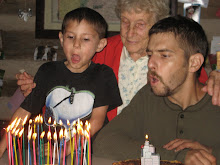I wish he would have picked an easier name to say. ;)
Park CJ, Shim JY.
Department of Anesthesiology, Catholic Medical School, Seoul, Korea.
Pheochromocytoma are functioning tumors which arise in chromaffin tissue of adrenal gland. The signs and symptoms of pheothromocytoma results from the release of the highly potent amines, epinephrine and norepinephrine by the tumors. This tumor release both epinephrine and norepinephrine into the blood stream for distribution to distant sites of action. Circulating norepinephrine produces widespread vasoconstriction, causing increased peripheral resistance and resulting in increased systolic, diastolic and mean arterial pressures. The direct effect on the heart is to increase the rate and force of contraction. As important effect is the reduction of plasma volume caused by prolonged increases in circulating norepinephrine and epinephrine. These adrenergic aminess have prominet metabolic as well as hemodynamic effects. The increase oxygen consumption and elevation of blood glucose and lactic acid level caused by epinephrine are much more marked than the increase produced by comparable amounts of norepinephrine. Anesthetic management of pheochromocytoma should considered prevent serious alterations in blood pressure. So, We present the case of anesthetic management for pheochromocytoma which control of hypertensive crises by the use of a intravenous infusion of sodium nitroprusside.
this explains a lot. It explains why he's had such high blood pressure (both numbers) and needed frequent blood transfusions. Maybe this is really good bad news.





No comments:
Post a Comment